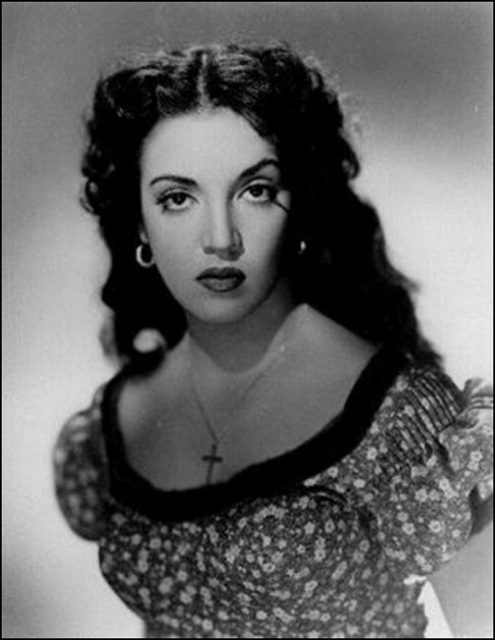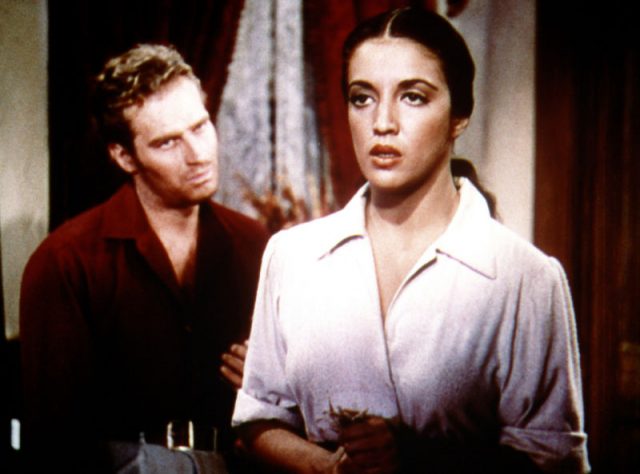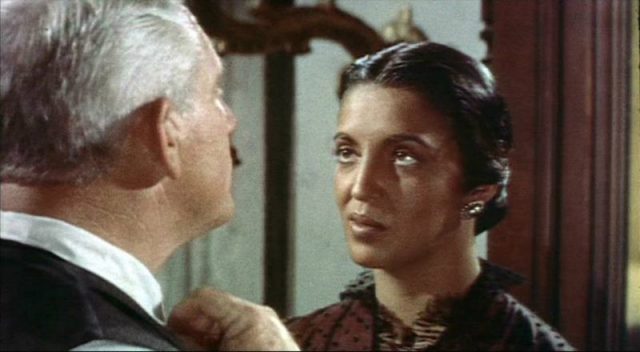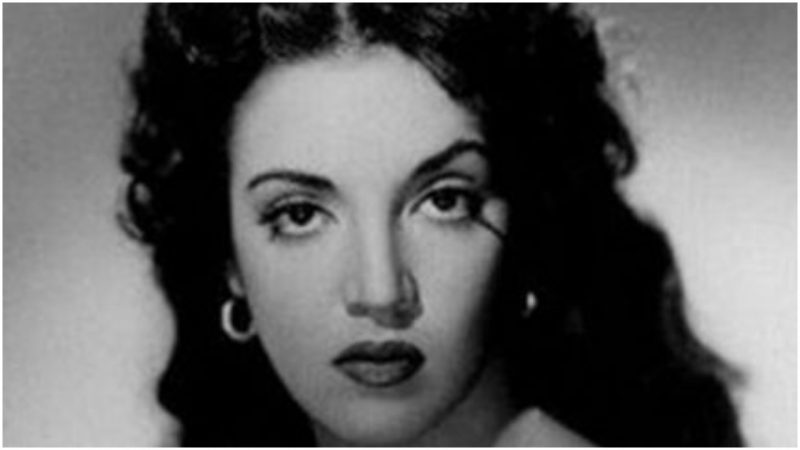Katy Jurado was a Mexican actress who appeared in Hollywood movies in the 1950s and 1960s. She stood next to Gary Cooper and Grace Kelly in the 1952 classic movie High Noon. Few may have realized how she struggled with her English–she delivered her lines by memorizing the way they sound. Nonetheless, she won the Golden Globe award for Best Supporting Actress in that movie.
Despite the fact that she came on the Hollywood scene with weak language skills, Jurado gained success while still promoting her Mexican heritage with pride. She carefully chose the parts offered to her, saying that she picked only the roles with dignity as opposed to the purely sexualized ones.
Jurado’s ex-husband, Ernest Borgnine, has called her “beautiful but a tiger.” She was exceptionally lovely, and seductive. She said, “I knew that my body was provocative. I admit, my physique was different and very sensual.” She commonly portrayed wicked and seductive characters, which became associated with her appearance. Jurado was a bullfighting aficionado, and by some coincidence, it was bullfight assignments that first brought her to Hollywood.

She was born Maria Cristina Estella Marcella Jurado de Garcia in 1924 to a wealthy family in the city of Guadalajara, Mexico. Apparently, her family owned much of what is now Texas, and in 1928, her cousin, Emilio Portes Gil, became president of Mexico. Although Jurado’s godfather, Pedro Armendáriz, was an actor, her family strictly forbade her becoming one, threatening to send her to a boarding school. So Jurado began her acting career in secret, at the age of 16 signing her first contract without her parent’s consent.
Her initial role was in the Mexican movie No matarás, in which Jurado played the first villain and femme fatale in her career. In 1943, Jurado appeared in her third movie, La Vida inútil de Pito Pérez, which brought her national success, and in 1948 she appeared in Nosotros Los Pobres (“We the Poor”), which remains her best-known performance in Mexican cinema. Jurado appeared in many Mexican movies throughout her career, in a period which movie historians named the Golden Age of Mexican cinema.

In 1951, while she was filming in Mexico, Jurado was spotted by John Wayne and director Budd Boetticher, a bullfighting professional himself, who cast her for his movie Bullfighter and the Lady. From there on, the gates of Hollywood were wide open for the Mexican actress. Despite her success in the U.S., Jurado never left Mexican cinema. She said: “I am very proud to make this picture because I look and act like a Mexican—not imitation. Some Mexicans go to Hollywood and lose their career in Mexico because they play imitation. I don’t want this to happen to me.” In 1953, Jurado received her first award from the Mexican Academy of Film, the Silver Ariel, the highest honor in Mexican cinema, for her performance in Luis Buñuel’s El Bruto.
The next year, 1954, Jurado was nominated for a Best Supporting Actress Oscar for her performance in Spencer Tracy’s Broken Lance. During her Hollywood career, Jurado performed alongside Anthony Quinn, John Huston, Kirk Douglas, Marlon Brandon, Charlton Heston, and many other accomplished actors. Due to her immense popularity in Hollywood, Jurado was awarded the keys to New York City, becoming the first Mexican woman to receive the honor.

Jurado received her second Ariel in 1973, for what she considered to be her best performance in Jorge Fons’ Fé, Esperanza y Caridad. And many years later, in 1998, Jurado received her third Ariel for Best Supporting Actress for her performance in Arturo Ripstein’s El Evangelio de las Maravillas. Jurado was a respected actress, and audiences all over South and North America loved her. But more importantly, her native Mexicans were proud of Jurado, and she remains one of the most popular characters in the country to this day.
It is needless to say that, privately, a lot of men were under the spell of Jurado’s beauty and seductiveness. She had love affairs with Tyrone Power and the filmmaker Budd Boetticher. Jurado was married twice, to Mexican actor Victor Velázquez with whom she had two children, Víctor Hugo and Sandra; and later to Hollywood actor Ernest Borgnine. She also carried on an affair with Marlon Brando. They never had an official relationship, but their affair and friendship lasted for many years. Jurado commented on their relationship: “He has been my close friend. I say that Marlon and I have been true friends of the soul, we speak soul to soul.” In 1960, she appeared in his movie One-Eyed Jack.
Jurado with Ernest Borgnine in the 1958 film The Badlanders (1958)
In 1981, while she was filming in the U.S., a tragic accident happened on a highway near Monterrey in which her son, Victor Hugo. This accident left Jurado deeply depressed for the rest of her life, and she abandoned her acting career for a few years. Jurado spent most of her later years in Mexico, performing in Mexican movies, English-speaking Mexican movies, and Mexican telenovelas. Suffering from heart and lung ailments, Jurado died of kidney failure and pulmonary disease on July 5, 2002, at the age of 78.
The Mexican composer Juan Gabriel immortalized Jurado with a song about her, Que re’chula es Katy (What a beauty is Katy) in 1998. And, of course, Katy Jurado has a star on the Hollywood Walk of Fame.
